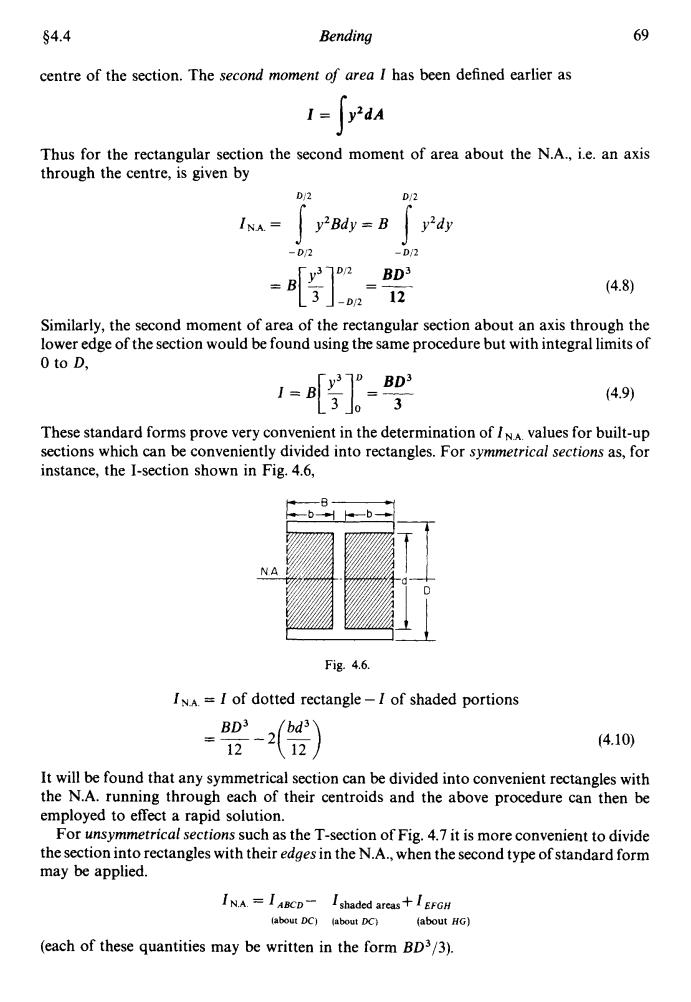正在加载图片...

§4.4 Bending 69 centre of the section.The second moment of area I has been defined earlier as dA Thus for the rectangular section the second moment of area about the N.A.,i.e.an axis through the centre,is given by D/2 D/2 INA= y2Bdy=B y'dy -D/2 -D/2 y372 BD3 =83o212 (4.8) Similarly,the second moment of area of the rectangular section about an axis through the lower edge of the section would be found using the same procedure but with integral limits of 0 to D, (4.9) These standard forms prove very convenient in the determination of INA values for built-up sections which can be conveniently divided into rectangles.For symmetrical sections as,for instance,the I-section shown in Fig.4.6, 0- NA Fig.4.6. INA =I of dotted rectangle-I of shaded portions BD3 12-12 (4.10) It will be found that any symmetrical section can be divided into convenient rectangles with the N.A.running through each of their centroids and the above procedure can then be employed to effect a rapid solution. For unsymmetrical sections such as the T-section of Fig.4.7 it is more convenient to divide the section into rectangles with their edges in the N.A.,when the second type of standard form may be applied. INA.=I ABCD-I shaded areas+I EFGH (about DC)(about DC)(about HG) (each of these quantities may be written in the form BD3/3).84.4 Bending 69 centre of the section. The second moment of area I has been defined earlier as I= yZdA Thus for the rectangular section the second moment of area about the N.A., i.e. an axis through the centre, is given by I 012 Di2 - DJ2 -D/2 = B[$]yl,, = rz BD3 Similarly, the second moment of area of the rectangular section about an axis through the lower edge of the section would be found using the same procedure but with integral limits of 0 to D. These standard forms prove very convenient in the determination of I N.A. values for built-up sections which can be conveniently divided into rectangles. For symmetrical sections as, for instance, the I-section shown in Fig. 4.6, Fig. 4.6. 1N.A. = I of dotted rectangle - I of shaded portions BD3 12 (4.10) It will be found that any symmetrical section can be divided into convenient rectangles with the N.A. running through each of their centroids and the above procedure can then be employed to effect a rapid solution. For unsymmetrical sections such as the T-section of Fig. 4.7 it is more convenient to divide the section into rectangles with their edges in the N.A., when the second type of standard form may be applied. IN.A = IABCD- Ishaded areas+ IEFGH (abut DC) (abut K) (about HC) (each of these quantities may be written in the form BD3/3)